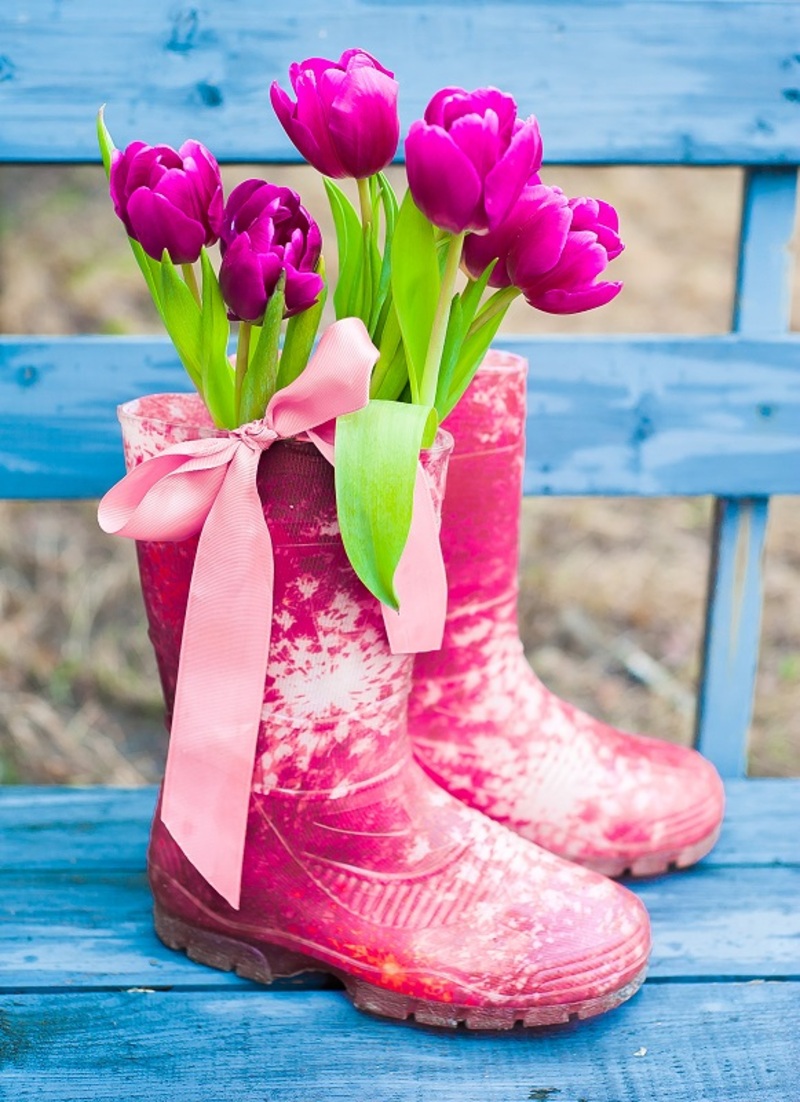Exploring seven remarkable tulip facts that defy logic
Posted on 17/08/2025
Exploring Seven Remarkable Tulip Facts That Defy Logic
When it comes to iconic flowers, the tulip stands out as a favorite among gardeners, botanists, and admirers worldwide. But beyond their striking beauty and varied colors lies a world of intrigue, history, and phenomena that seem to challenge our understanding of nature and economics. This comprehensive article delves into seven incredible tulip facts that defy logic--each one guaranteed to surprise, inform, and inspire awe.

1. Tulip Mania: The World's First Recorded Economic Bubble
The Unbelievable Wealth of Tulip Bulbs
During the early 17th century in the Netherlands, a period known as Tulip Mania swept through Dutch society. Ordinary tulip bulbs were elevated to the status of luxury items, with some bulbs selling for as much as a house in Amsterdam. This tulip-fueled frenzy led to one of history's most famous financial bubbles and subsequent crashes, baffling modern economists.
- Tulip bulbs were traded for vast sums of money, property, and even livestock.
- Speculation reached such heights that people bought tulip futures--betting on the future value of bulbs yet to be grown.
- The bubble burst dramatically in 1637, leaving fortunes lost and lives changed forever.
Studies of Tulip Mania pose important questions: How could a simple flower influence the destiny of an entire economy? Tulip Mania remains a legendary example of irrational market behavior that defies logic.
2. Tulips Can Change Color--But Not Because of Genetics
The Curious Case of Color-Changing Tulips
Did you know that tulips can actually change color over their lifetime? This fascinating phenomenon isn't due to their genetics, but rather to a viral infection called "tulip breaking virus" (TBV). Though it may sound harmful, the effects of this virus are visually stunning, creating beautiful streaks and flames of contrasting colors on each petal--a trait that became highly sought after during Tulip Mania.
- The virus disrupts pigment production within the petals, causing unpredictable patterns to emerge.
- Tulips originally bred for solid colors often become multi-hued and patterned if infected.
- Despite their beauty, TBV-infected tulips are weaker and tend not to last for generations.
Next time you encounter a striped or flamed tulip, remember: their eye-catching look is actually the result of a plant pathology that has mystified botanists for centuries.
3. Tulips Have an Intriguing Geographical Origin
Not Originally from the Netherlands!
While the Netherlands is globally famous for its endless tulip fields, the origins of tulips defy logic--they are not native to Dutch soil. Instead, tulips were first cultivated in the mountainous regions of Central Asia, particularly in areas that are now part of Kazakhstan, Uzbekistan, and northern Iran.
- Tulips grew wild in the harsh, rocky environments of Central Asia for thousands of years.
- Ottoman sultans prized tulips as rare and exotic treasures, leading to their spread in Turkish gardens.
- It wasn't until the 16th century that tulips made their way to the Dutch Republic, where they sparked the famous mania.
The next time you admire a Dutch tulip display, remember these surprising tulip facts--the flower's epic origin story is as remarkable as its appearance.
4. Tulips Are Edible and Have Been Eaten Out of Necessity
A Culinary Surprise During Times of Hardship
Among the tulip details that defy logic is the little-known fact that tulip petals and bulbs are edible. Although not part of everyday cuisine, historical crises--like the Holland Hunger Winter of World War II--forced desperate Dutch families to survive on tulip bulbs when food was scarce.
- Tulip petals can be used as salad garnishes; their taste is somewhat bland but safe for consumption in moderation.
- During WWII, people boiled or baked tulip bulbs, which reportedly taste similar to potatoes but can be bitter or toxic if not prepared correctly.
- Caution: Some tulip species or untreated bulbs contain toxic compounds and should not be eaten without proper knowledge.
This edible aspect of tulips showcases their surprising adaptability and the resilience of people in desperate times--making it one of the most unusual tulip facts in history.
5. Some Tulips Cost More Than Gold, Even Today
Tulip Varieties That Command Astronomical Prices
Believe it or not, certain rare or newly developed tulip varieties can command prices that rival luxury goods. While the days of exchanging homes for bulbs are over, select cultivars at auction, especially those with unique patterns or colors, attract serious collector interest and high bids. In the world of exclusive horticulture, some tulips defy economic logic to this day.
- Rare bulbs and historic variety tulips often fetch hundreds or thousands of dollars each.
- Tulip breeders constantly introduce new hybrids in the hopes of finding the next big sensation.
- Unique "broken" tulips, with their viral-induced patterns, remain particularly valuable among collectors.
This remarkable dynamic ensures that tulip fascination and their seemingly illogical value remain a topic of conversation and admiration across the globe.
6. Tulips Can Predict the Seasons
Tulips As Nature's Most Reliable Calendars
One of the most extraordinary tulip facts is their ability to "predict" seasonal changes. Tulips need a period of cold dormancy, known as "vernalization," to trigger spring blooms. Farmers and gardeners rely on tulip blooming patterns to identify critical shifts in the weather.
- Tulips will not flower unless they have experienced sufficient cold, making them natural harbingers of spring.
- The term "breaking ground" refers to the first tulip shoots after winter, signaling warmer days ahead.
- Some scientists track global climate trends by recording annual tulip bloom dates.
This ability to mark time and forecast the weather adds another layer to the logical mysteries surrounding tulips--showcasing their role beyond mere aesthetics.

7. Tulips Symbolize Everything from Love to Forgiveness
A Language of Flowers with Global Significance
Few flowers possess as rich and mysterious a symbolism as the tulip. Across continents and centuries, different colors and forms have taken on meanings that surprise and enchant.
- Red tulips universally represent deep, abiding love and are often exchanged on romantic occasions.
- White tulips symbolize forgiveness and purity, often used in gestures of reconciliation.
- Purple tulips evoke royalty, while yellow tulips reflect cheerful thoughts and sunshine.
The multifaceted tulip symbolism continues to fascinate lovers, poets, and artists worldwide. Each color and bloom brings with it centuries of lore, myth, and human emotion--demonstrating a depth of meaning that goes far beyond simple aesthetics.
Conclusion: The Enduring Mystique of Tulips
In traversing seven remarkable tulip facts that defy logic, we've unearthed a collection of stories, secrets, and scientific marvels that give new meaning to this cherished flower. From fueling historic financial bubbles to signaling the arrival of spring, changing color via viral infection, and even feeding people during times of famine, tulips continue to captivate us in ways few other flowers can.
Whether you are a gardener, a history buff, or simply a flower lover, these surprising tulip details remind us that there is often more than meets the eye in the natural world. The next time you stroll past a tulip bed or receive a colorful bouquet, take a moment to reflect on the logical enigmas, powerful symbolism, and historical weight carried by these remarkable blooms.
Key Takeaways on Tulip Logic-Defying Wonders
- Tulips were the center of the world's first economic bubble, impacting entire livelihoods.
- Viral infections can transform tulip colors, defying genetic norms.
- Tulips originated in Central Asia, not the Netherlands as commonly believed.
- Tulips saved lives as emergency food during times of war and famine.
- Certain tulip varieties still fetch exorbitant prices, reflecting ongoing collector demand.
- Tulip blooming cycles can predict seasonal shifts, showing their pivotal role in agriculture and climate science.
- The symbolic language of tulips spans cultures and centuries, making them a universal emblem of profound emotions.
For those eager to learn more about incredible tulip facts and their fascinating history, the journey never ends--each spring brings new discoveries, and each bulb holds the promise of a story that may once again defy logic!







